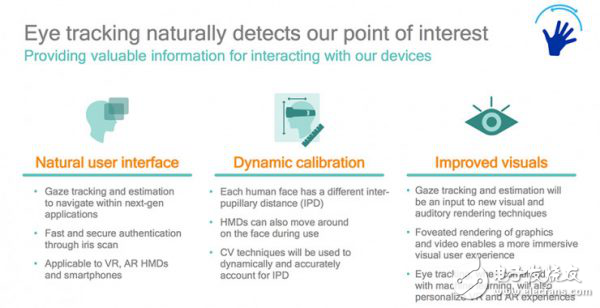Qualcomm's latest flagship mobile processor, the Snapdragon 835, was officially released at the CES 2017 show in Las Vegas, USA. This new flagship processor will undoubtedly become the standard for the flagship mobile phones of the major mobile phone manufacturers in 2017, but the growth of smartphones is slowing down. Virtual reality continues to be hot, what improvements does Xiaolong 835 have for VR and AR?
éªé¾™835 parameters
In the middle is the latest Snapdragon 835 processor chip
The Snapdragon 835 processor adopts Samsung's 10-nanometer FinFET production process, the new Kryo280 core and 4+4 eight-core architecture. It is worth noting that the small core frequency of the Snapdragon 835 processor reaches 1.9GHz, which is suitable for daily use of mobile phones. There is a big improvement in the experience, because in most cases the phone is calling small core work.
In the GPU, the new generation of Snapdragon 835 has added DirectX 12 support, which is also very good to explain the previous example of the Snapdragon 835 chip running Windows 10 system. In terms of camera, Snapdragon 835 can support up to 32 million pixels, and the baseband is also updated to X16 LTE, supporting the latest QC4.0 charging and so on.


Qualcomm continues to promote support for VR and AR applications on the Snapdragon 835, in addition to its own VR all-in-one solution, and also optimized Google's Daydream.
Due to VR's requirements for 3D graphics, 3D audio, spatial positioning, and gesture recognition, there is a high demand for SoC performance and collaboration between processing elements.
An important parameter affecting the VR experience is latency (from motion to screen display time). In this regard, Qualcomm indicates that the delay of 835 is 15ms compared to 18ms for 820.

In addition, Qualcomm has introduced a system called Visual InerTIal Odometry (VIO, Visual Inertial Measurement) to track head 6-DOF (6 degrees of freedom) motion. The system uses a Hexagon 682 DSP to process a video stream of approximately 30 fps, while using an All-Ways Aware DSP to capture accelerometer and gyroscope data at 800 Hz or 1000 Hz. By combining these data, you can get 6 degrees of freedom position information.
Qualcomm said that using DSP to achieve this function is almost four times more efficient than CPU processing.

Qualcomm believes that computer vision is an important part of VR and AR. In this regard, Qualcomm invested in Qixin Yiwei, which focuses on eye tracking technology in China, and added a foveated rendering function to VR through eye tracking technology to make the center of the user's field of vision focus more clearly. Can add new ways to interact.
In addition, each person has a different interpupillary distance (IPD), and the head is also moved when worn on the head, and can be dynamically and accurately adjusted for IPD through computer vision.
In addition, gesture tracking through computer vision allows users to interact with virtual objects without the need for a physical controller. Computer vision data from the DSP can also be used to render the user's hand in the virtual space to improve the immersive experience.
Mobile VR is considered to be the future of the VR industry, but its experience is inferior to PC VR at many levels, and improving the experience becomes a top priority. At present, Android flagship mobile phones and high-end VR all-in-ones mostly use Qualcomm chips. In the view of Lei Feng.com, the launch of 835 will improve the experience of mobile VR and promote the popularity of VR.
Antifouling Thin Film Panel,Antifouling Thin Film Panels,Antifouling Film Panel,Film Panel Medical Equipment
zhejiang goldcity technology co,ltd , https://www.membrane-gc.com